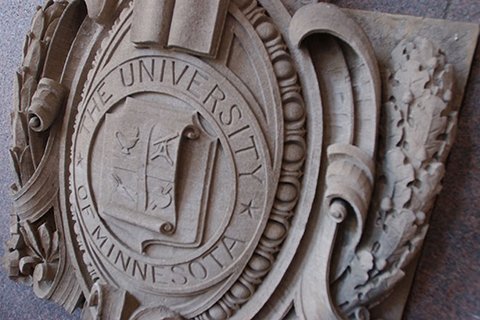University ranked eighth among public research institutions

Diversified approach to research paying dividends for U of M, state
March 6, 2017
While University of Minnesota Electrical and Computer Engineering Professor Jian-Ping Wang develops transformative technology using electron spin as the basis for computer logic and memory advances, his Center for Spintronic Materials, Interfaces and Novel Architectures (C-SPIN) continues to receive significant financial support from business and industry (B&I) sponsors.
Wang’s center, and many other centers and projects across the University, received more than $80 million in B&I funding in fiscal year 2016, up 3.6 percent ($2.8 million) from last year, marking the highest total in U of M history.
$880 million in research expenditures
According to the National Science Foundation survey of research and development—the most accurate list of research expenditures in the U.S.—the University remains eighth among public research institutions, posting more than $880 million in research expenditures in FY15, the latest year for which data is available.
“Business and industry support has accounted for more than 10 percent of all externally-funded research at the U of M over the past two years and is gaining in importance as federal funding continues to decline,” said former Vice President for Research Brian Herman in his annual report on University research presented to the U of M’s Board of Regents.
Herman, who recently returned to the faculty in the Department of Biomedical Engineering, pointed to several significant public-private partnerships contributing to sustained growth in B&I support including Minnesota Discovery Research and InnoVation Economy (MnDRIVE), a targeted research program supported by the state of Minnesota; the Minnesota Innovation Partnerships (MN-IP) program for licensing intellectual property; and the Corporate Engagement Workgroup, which manages and coordinates relationships with companies across the University’s many colleges and units.
Record year in research funding
In all, University researchers successfully competed for $788 million in externally-sponsored research awards in FY16, the highest total ever (when one-time American Recovery and Reinvestment Act funding is excluded). These awards continued a decade-long trend of diversifying the University’s research portfolio, with federal funds’ share shrinking below 60 percent of the total, and non-federal sources, including B&I, driving a 9 percent inflation-adjusted increase in funding between FY07 and FY16.
The University also launched a record 17 startup companies in FY16, and passed a milestone of 100 startups since FY06. The University's Office of University Economic Development increased activities with large and small companies, as well as community partners across Minnesota.
With diminished federal funding for university research and public skepticism over universities’ missions, values and impact, Herman said the University needs to engage with its community and partners to create both social and economic value at the same time.
“I feel encouraged that the University can meet the challenges of this changing funding landscape,” Herman said.
“We have many assets in our people and infrastructure," Herman added. “If we can shift from ‘the way we’ve always done it’ toward a nimbler and more innovative culture, we can be a leader in adapting to the new research reality of constrained resources.”
